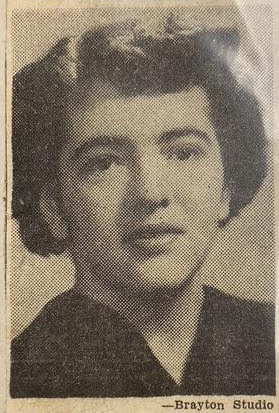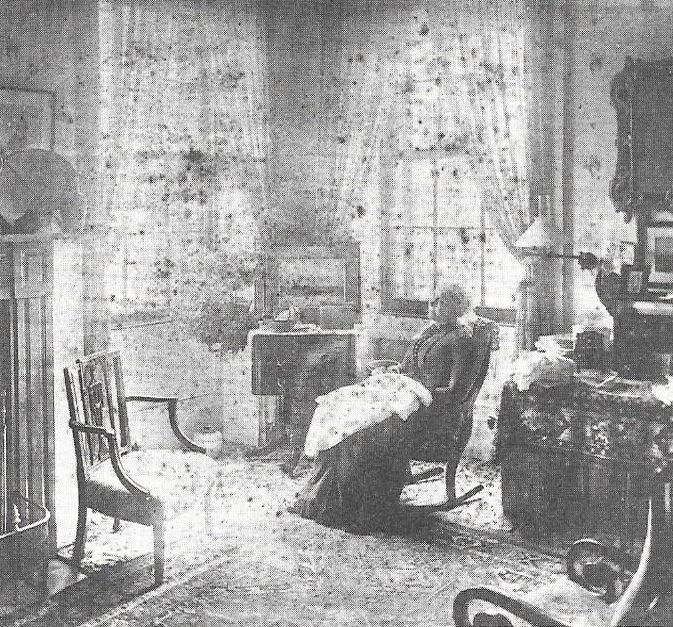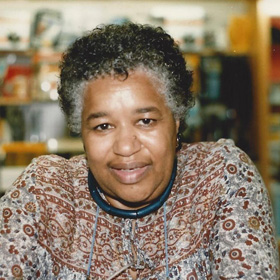Born in 1838 to Black abolitionists, Martha Bailey Briggs (1838-1889) realized at a young age that education was essential to ending slavery. Her life is a testament to the leadership that African American women provided in the field of education during the 19th century. Her extensive experience as both teacher and administrator was invaluable in the development of teacher training programs, predecessors to modern college and university education departments.
Born on March 31, 1838, to John and Fanny Briggs, active Black abolitionists in New Bedford, Martha Bailey Briggs (1838-1889) realized at a young age that education was essential to ending slavery. Her life is a testament to the leadership that African American women provided in the field of education during the 19th century.
Her father, John Briggs of Tiverton, Rhode Island, was a well-known abolitionist and friend of Frederick Douglass. Her mother, Fanny Bassett Briggs of Martha’s Vineyard, died when Martha was a young child. John encouraged Martha to study hard and arranged for her to be privately tutored. At the age of 12, Martha entered New Bedford High School in 1850 and became one of the first African American women to graduate from the school. Martha soon began teaching in her father’s home on Allen Street conducting day classes for young students and evening classes for adults, including those with ties to the Underground Railroad.
One of her first teaching positions was on Martha’s Vineyard teaching the Gay Head and Mashpee Wampanoags on the reservation. She was then hired to teach in Newport at a private school by George T. Downing, a Black abolitionist and entrepreneur with restaurants in Newport and New York City. His own children attended the private school to avoid the segregated public schools. It was in Newport where her reputation as a teacher came to the attention of abolitionist educator Myrtilla Miner who invited her in 1859 to join the faculty at the Miner Normal School in Washington, D.C. Martha’s father did not support her moving south at the time due to the increased tensions between the North and the South and fear for Martha’s safety, so she declined Miner’s offer.
Martha continued to work for the educational advancement of African Americans, and her move south would eventually become a reality. In 1866, she was one of 40 New Bedford educators to travel south to teach freed Blacks after the Civil War. In 1869, after 10 years of teaching in various positions, Martha accepted a full-time teaching position in the public schools of Washington, D.C., where she was recognized for her leadership and soon became principal of the Anthony Bowen School until 1873. From 1873 until 1879, she joined the faculty at the Normal and Preparatory Department of Howard University, now the School of Education at Howard. In 1879, 20 years after Martha’s first invitation to the Miner Normal School, she became its third principal and remained there through 1883. In June 1880, Briggs received the commendation of the Board: “We express the belief and hope that the Miner Normal School, whose first year has proven so successful under the earnest and faithful charge of its principal, Miss Martha Briggs, will eventually not only supply the colored schools of the district with educated and earnest teachers but that it will in measure contribute to supply the demand of the South for colored teachers for the colored race.” The Miner Normal School was known for training African American teachers to teach African American students in the District and other southern locations. During her four years as its principal, Martha led about 80 student teachers through successful program completion to graduation. In 1883, Martha left the Miner Normal School and returned to Howard University to serve as principal of its Normal Department until 1889. Her extensive experience as both teacher and administrator was invaluable in the development of teacher training programs in Normal schools, the predecessors of education departments in today’s colleges and universities.
Martha Bailey Briggs died on March 28, 1889, from a tumor at the age of 50. On May 14, 1889, at a memorial service by the Bethel Historical and Literary Society in Washington, D.C., she was eulogized as one of the most outstanding educators of her time. At a Howard University memorial service, a marble tablet was placed at the Andrew Rankin Chapel. Its inscription reads, “Her works do follow her.” Frederick Douglass led a group of teachers that asked the Washington, D.C. Public School Commission to name a new school for colored students in Martha’s honor. Since her death, the District’s Board of Education has named two schools for her. In New Bedford, the Martha Briggs Educational Club was founded in 1920 by a group of colored women to establish a student aid fund for minority students in the Greater New Bedford area. The club awards annual scholarships to graduating seniors. With Martha Briggs as the model for achievement in education and community service, club members also serve as models and mentors to local youth. Martha was returned to New Bedford for burial.
Lee Blake, New Bedford Historical Society
Information from
-
“At The District Building.” The Washington Post (1877-1954), 26 May 1889, ProQuest Historical Newspapers.
-
“Historic Church, Old, Forgotten Meeting House on Martha’s Vineyard.” Sunday Evening Standard, 6 June 1909.
-
“Martha Bailey Briggs.” New Bedford Historical Society, http://nbhistoricalsociety.org/wp/?portfolio=martha-bailey- briggs.
-
“Martha Bailey Briggs.” Notable Black American Women, Gale, 1996. Gale Biography in Context.
-
Scruggs, Lawson A. Women of Distinction. Raleigh, NC, 1893.
-
Thomas, Joseph D., et al., editors. “Martha Bailey Briggs.” A Picture History of New Bedford, Volume One, 1602-1925. Spinner Publications, 2013, p. 183.
-
Turner, Geneva C. “For Whom Is Your School Named?” Negro History Bulletin, vol. 22, April 1959, p. 165.
![[Martha Bailey Briggs], c. 19th century, Photograph, Courtesy of New Bedford Historical Society Photograph of Martha Bailey Briggs - she has her black hair in a braided updo, and is wearing a thick black dress](https://historicwomensouthcoast.org/wp-content/uploads/2018/05/Martha-Bailey-Briggs-200x200.jpg)




